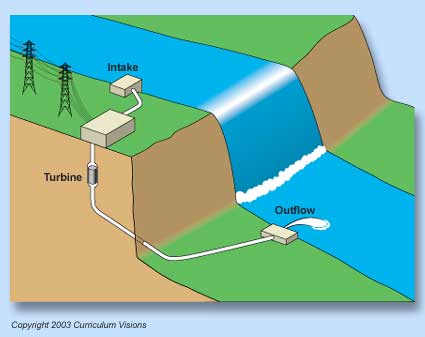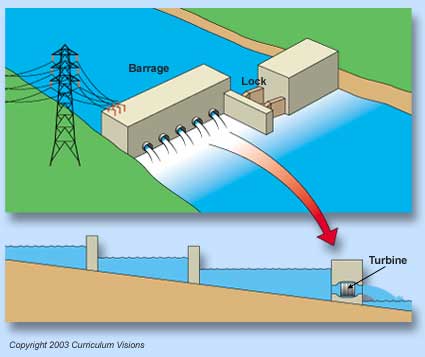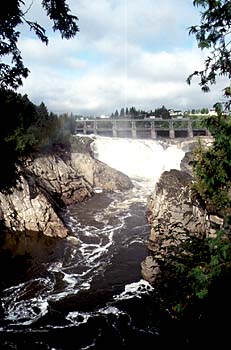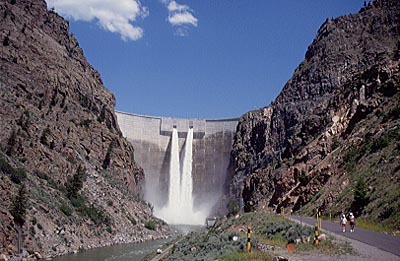hydro-electric power
Electricity produced by allowing fast-flowing water to turn turbine blades. The blades are connected to a shaft which turns an electric generator.


Hydroelectric power is often generated from a high dam as shown here.

Power can be generated from large rivers by using barrages as shown here.

Hydroelectric power is suited to naturally fast flowing rivers on steep slopes. A dam is built to pond up water. The outlet of the dam goes past the turbines. Often, surplus water is allowed to flow over the crest of the dam as here on the St Charles River, Quebec.
Hydroelectricity is a green form of power because it generates no waste gases and uses natural supplies of water. The only impact it has on the landscape is that water has to be stored behind dams so that there can be a reliable supply of electricity.

When water is allowed to flow out from the dam, it means that the reservoir is full and more water is reaching the turbines than they can cope with. Hydroelectric turbines are placed at the foot of a dam, not high up in it.


|